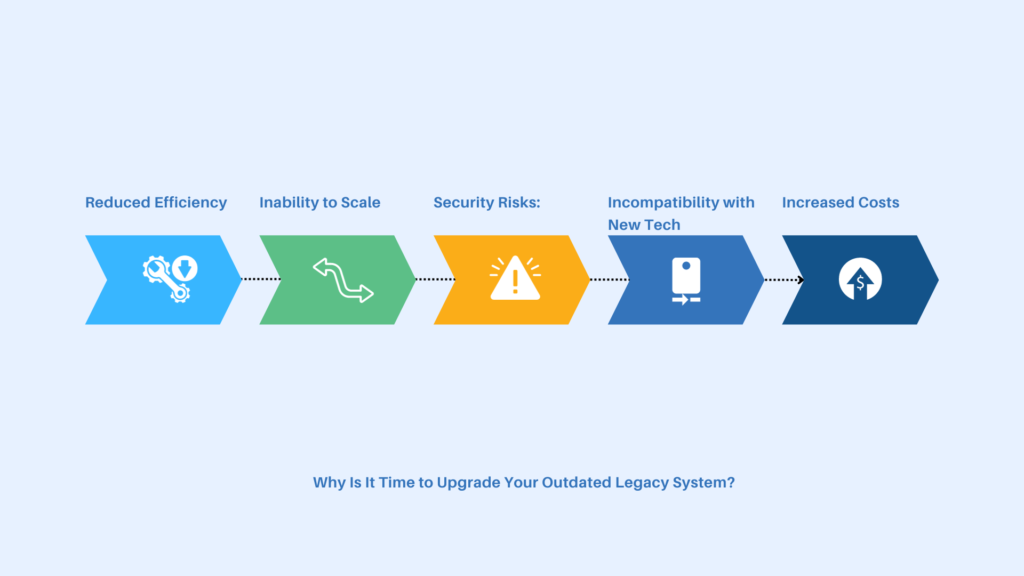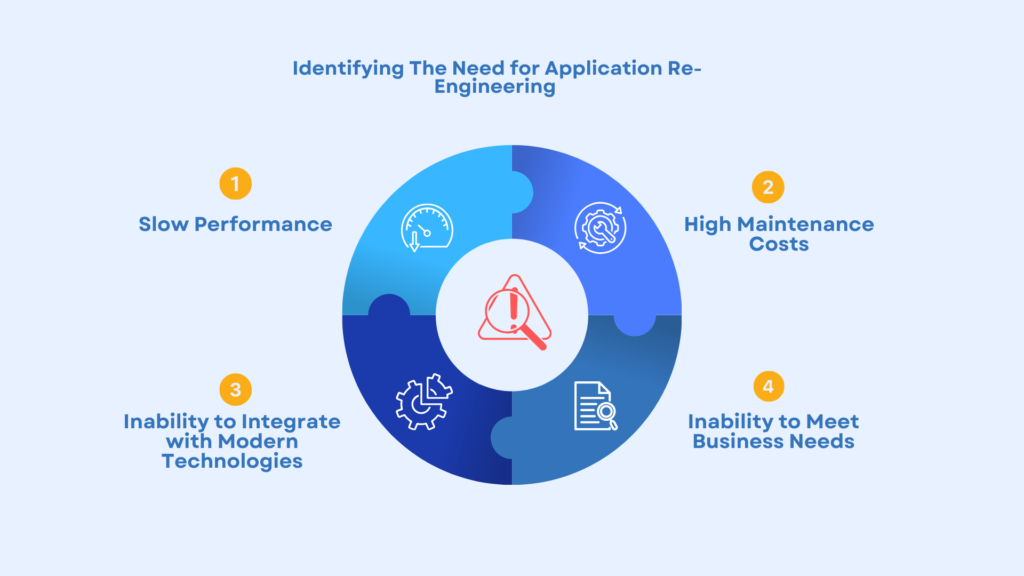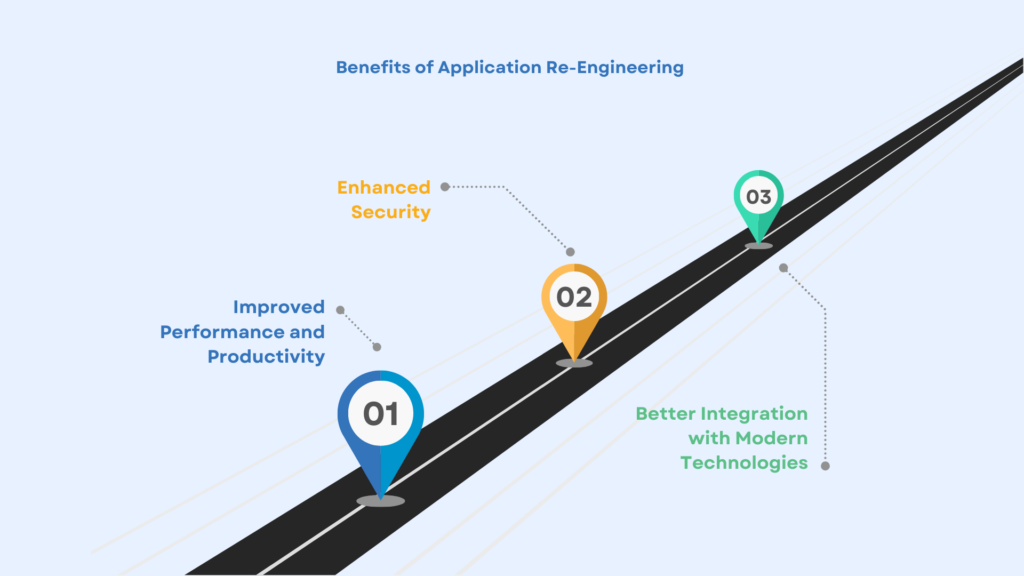Elevate Your Business with Application Re-Engineering: Here’s How
Application Re-Engineering is reimagining and redeveloping outdated software applications to meet modern business needs. Imagine your software as a classic car – it has a timeless appeal, but it’s showing signs of wear and tear in today’s high-speed digital race. Application Re-Engineering steps in as the ultimate restoration project. It gives your application a tech-savvy makeover, reimagining its architecture, fine-tuning features, and ensuring everything runs smoother than ever. It holds onto your important data and the core functions you can’t do without. It helps to boost performance, fortify security, and create a truly exceptional user experience. Let’s explore what application re-engineering is, why it’s essential, and how it can help your business grow and compete effectively. We’ll also discuss popular examples of companies that have benefited from this approach and its numerous advantages.
Why Is Application Re-Engineering Essential?

Application re-engineering is essential in the modern business landscape for several reasons:
-
Business Agility:
Modern businesses must adapt quickly to changing market demands. Re-engineering existing applications allows companies to stay agile and responsive to new technologies and evolving customer expectations.
-
Cost-Effectiveness:
Re-engineering applications can be more cost-effective than building new software from scratch. It reduces maintenance costs, improves operational efficiency, and minimizes the risk of system failures.
-
Improved Customer Experience:
Re-engineering applications can enhance the user experience by improving performance, functionality, and usability, leading to increased customer satisfaction.
-
Competitive Advantage:
Re-engineering applications can give companies a competitive edge by enabling them to offer innovative and differentiated products or services that meet the evolving needs of customers.
-
Security and Compliance:
Re-engineering applications helps ensure that software systems are compliant with industry standards, and regulations, and secure against cyber threats.
Why Is It Time to Upgrade Your Outdated Legacy System?

Outdated legacy systems can significantly hinder business growth in several ways:
-
Reduced Efficiency:
Outdated systems are often slow, error-prone, and require manual intervention, leading to reduced efficiency and productivity. This can limit the amount of work that can be done in a given time frame.
-
Inability to Scale:
Outdated systems may not be designed to handle larger volumes of data or more complex workflows, limiting the ability to scale operations and expand into new markets.
-
Security Risks:
Outdated systems may lack the latest security features, making them vulnerable to cyber-attacks and data breaches, which can result in financial losses and damage to the company’s reputation.
-
Incompatibility with New Technologies:
Outdated systems may not be compatible with essential new technologies like cloud computing, mobile applications, and artificial intelligence, hindering competitiveness.
-
Increased Costs:
Outdated systems require more maintenance, support, and training, increasing costs and reducing profitability, making it challenging to invest in growth-critical technologies.
Identifying The Need for Application Re-Engineering

The need for application re-engineering becomes evident when businesses face challenges such as slow performance, high maintenance costs, an inability to integrate with modern technologies, and an inability to meet their business needs.
– Slow Performance:
One of the most common signs is slow performance, which can lead to reduced efficiency. Re-engineering can improve performance by upgrading hardware, optimizing code, and re-designing workflows.
– High Maintenance Costs:
Outdated systems require more maintenance, support, and training. Re-engineering can reduce maintenance costs by upgrading to a more modern, efficient, and scalable system.
– Inability to Integrate with Modern Technologies:
The inability to integrate with modern technologies risks falling behind the competition, making re-engineering crucial to stay competitive.
– Inability to Meet Business Needs:
Outdated systems may not handle larger volumes of data, limiting scalability and the ability to meet business needs.
Popular Examples of Companies Benefiting from Application Re-Engineering
Here are some prominent tech companies that have reaped the rewards of application re-engineering:
Uber:
Uber, the popular ride-hailing service, also leveraged application re-engineering to enhance its services. In 2016, the company announced a massive re-architecture project, transitioning its entire platform to a microservices architecture. Here’s how Uber benefited from this re-engineering effort:
- Scalability and Performance: The move to microservices allowed Uber to scale its platform efficiently, improve its performance, and reduce system downtime. This was particularly vital for Uber as it rapidly expanded its services to various cities around the world.
- Machine Learning Integration: Uber harnessed machine learning to optimize its pricing and routing algorithms. As a result, it could provide more accurate predictions of arrival times and offer better pricing options to customers, enhancing the overall user experience.
Netflix:
Netflix, the world’s leading subscription-based streaming service, is another example of a company that embraced application re-engineering to achieve its goals. Netflix’s journey involved shifting to a microservices architecture and enhancing its recommendation algorithms:
- Scalability: Netflix’s transition to microservices enabled it to handle its massive user base and expand its streaming services to a global audience. The company’s platform became more flexible, allowing it to adapt to various market demands.
- Personalized Content Recommendations: Netflix’s application re-engineering included the implementation of advanced machine learning algorithms to personalize content recommendations for users. This played a crucial role in keeping viewers engaged and satisfied, reducing churn rates, and ultimately driving subscriber growth.
Benefits of Application Re-Engineering

Application re-engineering provides numerous benefits to businesses, including:
– Improved Performance and Productivity:
Streamlined, faster, and reliable systems lead to enhanced overall performance and productivity.
– Enhanced Security:
The latest security protocols and access controls protect sensitive data.
– Better Integration with Modern Technologies:
Integration with technologies like cloud computing, IoT, and AI leads to improved operations and customer services.
How HazenTech Can Help?
Application re-engineering is a powerful strategy for modern businesses seeking growth and competitiveness. Hazentech offers comprehensive enterprise Application development and re-engineering services. Our experienced team not only develops apps but also focuses on modernizing and optimizing outdated software, ensuring improved performance, security, and usability. We work closely with businesses to assess their application’s needs, create efficient plans, and execute the re-engineering process effectively, aligning software capabilities with evolving requirements. Choose HazenTech because we make it easy for you to achieve business success.








